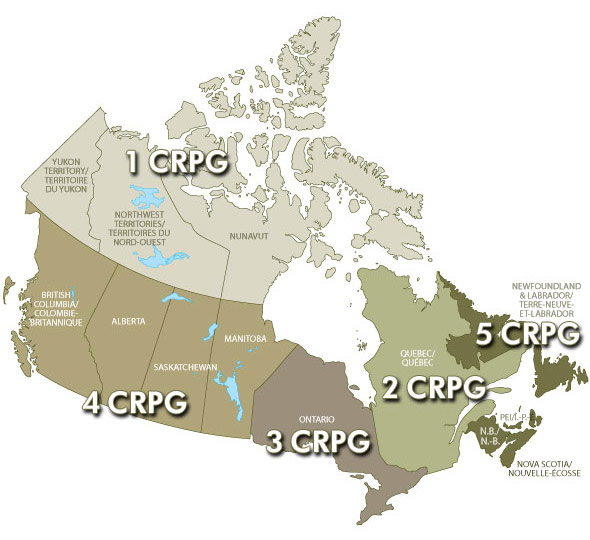Taitaa vaan olla noi rangerit enempi poliiseja tai rajavartioita kuin sotilaita, mutta eivät oikein poliisejakaan. Jonkinlaisia sheriffin vastikkeita ja esivallan edustajia eritoten alkuasukasalueilla; vähän samanlaisia mitä rajavartijat olivat Lapissa joskus vuosia sitten.
http://www.army-armee.forces.gc.ca/en/canadian-rangers/index.page
http://www.army-armee.forces.gc.ca/en/weapons/index.page
About the Canadian Rangers
The Canadian Rangers are a sub-component of the Canadian Armed Forces (CAF) Reserve.
They provide patrols and detachments for national-security and public-safety missions in sparsely settled northern, coastal and isolated areas of Canada that can not conveniently or economically be covered by other parts of the CAF.
The Canadian Rangers protect Canada's sovereignty by:
- Reporting unusual activities or sightings;
- Collecting local data of significance to the CAF; and
- Conducting surveillance or sovereignty patrols as required.
Canadian Rangers by the numbers:
- Approximately 5000 – current number of Canadian Rangers;
- Over 200 – number of communities where Canadian Rangers live; and
- 26 – dialects/languages spoken by Canadian Rangers, many of whom are Aboriginal.
Organizational Structure - Patrol Groups
What We Do: The Rangers’ Tasks
The Canadian Rangers are the military’s eyes and ears in the sparsely settled northern, coastal and isolated areas of Canada. Appropriately, their motto is
Vigilans, meaning “The Watchers.”
As members of the Canadian Armed Forces (CAF), the Canadian Rangers
- Conduct and support sovereignty operations:
- Conduct sovereignty and surveillance patrols and training
- Conduct North Warning Site patrols
- Report suspicious and unusual activities
- Collect local data of military significance
- Conduct and assist in CAF domestic operations:
- Conduct coastal and inland water surveillance
- Provide local knowledge and expertise
- Participate in search and rescue operations
- Provide support in response to natural or man-made disasters and humanitarian operations
- Provide assistance to federal, provincial/territorial or municipal authorities
- Maintain CAF presence in the local community:
- Instruct and supervise youth in the Junior Canadian Rangers (JCR) Program, a program that has significantly improved the quality of life of young people in the most isolated areas of Canada
- Support and participate in events in the local community (such as Yukon Quest, Canada Day, and Remembrance Day)
Canadian Rangers in the past have
- Conducted routine search and rescue operations;
- Provided assistance during the avalanche at Kangiqsualujjuaq in northern Québec;
- Provided support during the drinking water crisis in Kashechewan, Ontario; and
- The Rangers perform their tasks exceptionally well and are extremely valuable to the CAF.
https://en.wikipedia.org/wiki/Canadian_Rangers
The
Canadian Rangers (
French:
Rangers Canadiens) (often mistakenly called the
Arctic Rangers) are a sub-component of the
Canadian Armed Forces reserve that provide a military presence in Canada's sparsely settled
northern, coastal, and isolated areas. Formally established on May 23, 1947, a primary role of this part-time force is to conduct surveillance or sovereignty patrols (SOV PATS) as required. Some Canadian Rangers also conduct inspections of the
North Warning System (NWS) sites and act as guides, scouts, and subject-matter experts in such disciplines as wilderness survival when other forces (such as Army units of the
Regular Force or
Primary Reserve) are in their area of operations.
The Canadian Rangers are a volunteer force made up of
Inuit,
First Nations,
Métis and non-Aboriginals; however, it is a common misconception that the organization is a First Nations entity. The ethnic make-up of the numerous patrols across Canada is entirely an element of geography. Canadian Rangers are paid according to the rank they hold within their patrol and when present on operations or during training events. There are currently approximately 5000 Rangers serving in various communities around Canada.
Chain of command
The Canadian Rangers became part of the
Canadian Army in October 2007, having previously been under the Vice Chief of the Defence Staff for the
Canadian Forces. The
Commander of the Canadian Army is the Canadian Ranger National Authority (CRNA). The Commander of the Canadian Army has a small cadre of CRNA staff in Ottawa. These CRNA staff act as a conduit for information, assist with general development and improvement, assist in generating, modifying, and maintaining policy which addresses the unique nature of the Canadian Rangers (including administrative policy, unit establishment and structure, training policy, and logistical policy), and with the financing of the Canadian Rangers. These staff are not directly within the chain of command, but are instead seen as the technical and advisory link between the Canadian Ranger units and the Commander of the Canadian Army.
Command and control of the respective Canadian Ranger units (known as Canadian Ranger Patrol Groups (or CRPGs)) is devolved from the Commander of the Canadian Army down to his subordinate commanders of the various regional divisions. There are five CRPGs and each CRPG corresponds to one of the regional divisions (as seen below). The CRPGs tend to be provincially oriented, apart from 1 CRPG, which covers the whole of northern Canada north of the
60th parallel, and 4 CRPG which covers the four
western provinces (
British Columbia,
Alberta,
Saskatchewan, and
Manitoba). Each CRPG has a headquarters and a number of patrols, albeit that 4 CRPG's patrols are managed within a company construct, with provincially oriented companies each commanding their own patrols. The patrols tend to be centred on remote communities throughout Canada and are frequently named after the town or village they are from (the Terrace Patrol, in British Columbia, for instance).







 Vastaava heti Suomeen?
Vastaava heti Suomeen?




 ja jotkut taas tykkää kiipeillä Everestin huipulle lumimyrskyssä. Sit on niitä jotka haluaa koiravaljakon kanssa kesken umpitalven juosta pitkin ikuöisiä talvihankia jääkarhuja väitellen ?!
ja jotkut taas tykkää kiipeillä Everestin huipulle lumimyrskyssä. Sit on niitä jotka haluaa koiravaljakon kanssa kesken umpitalven juosta pitkin ikuöisiä talvihankia jääkarhuja väitellen ?!